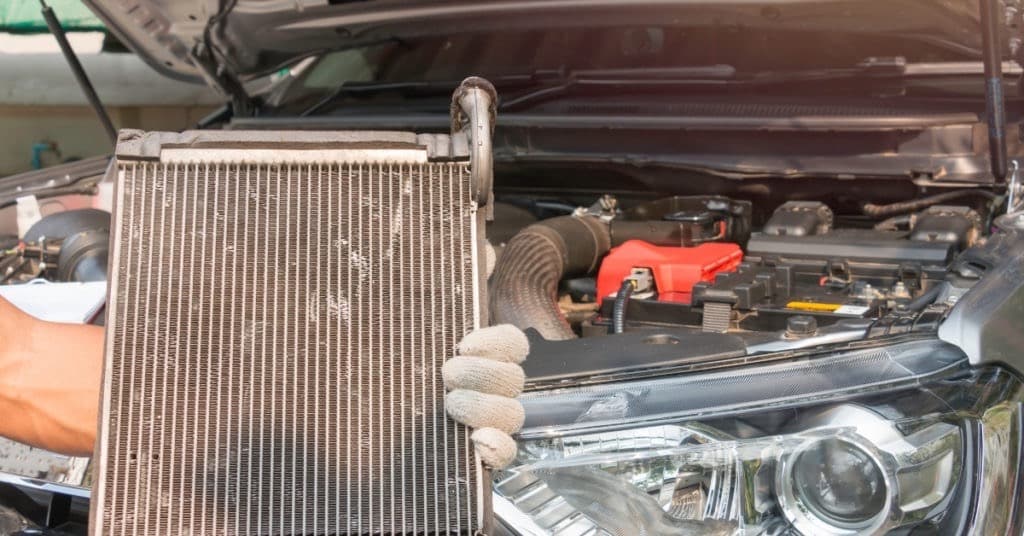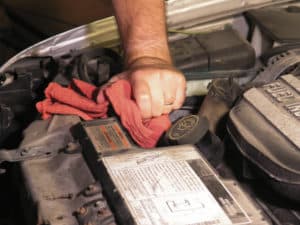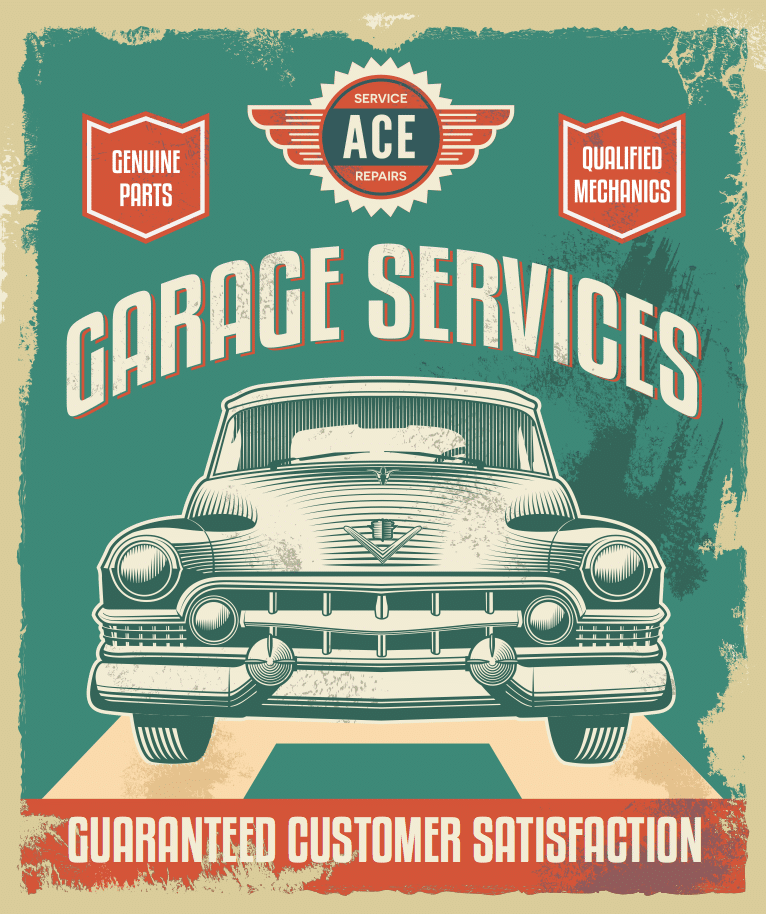
Your car's radiator plays a very important role in keeping your car in driving condition. While you may not notice it immediately, a broken radiator, either as a result of a leak or other mechanical issues, can cause serious damage to your engine.
The professional team at Ace Auto Utah can help repair your radiator and get you back on the road in no time. Feel free to stop by and see what we can do for you.
Car Radiator Repair Quotes from ASE Certified Mechanics
What Does a Car Radiator Do?
Automobile engines generate extreme amounts of heat. If that heat stayed entirely within the engine block, it would start to wear down the metal making up the individual engine components. Radiators disperse this heat into the outside air, keeping your engine running at a safe temperature. This happens by having coolant flow around various parts of the engine and then back into the radiator core, which is the large tank-like feature at the very front of your car. Your radiator also has a fan that turns on and off when needed, usually when your car is either moving very slowly, or it is in the park with the engine running. The fan keeps air flowing through the core, continually lowering the temperature of the coolant before it heads back into the engine block.
Cheap Radiator Repair near West Jordan Utah

One of the most common problems in engine cooling systems is a radiator leak. When this occurs, there may not be enough coolant in the system to keep your engine running at a safe temperature (around 200F for most vehicles). If the radiator itself is leaking, you will almost always need professional help, but if the leak is through a hose, someone with automotive knowledge may be able to find a replacement and swap the leaky hose out themselves. Other common problems include a faulty thermostat, which regulates when coolant is released into the engine, and a broken fan, which will need to be replaced, but you would be safe driving for a short time as long as the engine did not idle very much.
A few of the easier fixes include:
Refilling a coolant system generally does not take very long and will always need to be done if the air is suspected to have gotten into the system. If the coolant is low due to a hose leak, those issues can usually be taken care of within a few hours, especially with newer cars, which are usually easier to repair thanks to the availability of standard parts. If your pump is broken, it will need to be replaced immediately, but it is a relatively inexpensive fix and if a part is nearby, it can be done within a day or two.
Car Radiator Repair Service FAQs
At Ace Auto Utah, we want to make sure that all of your questions are answered before you decide to partner with our services. Some of the most common questions that we get asked include:
A car radiator is a kind of heat exchange equipment used in automobile engines to prevent them from overheating. A car’s
water pump circulates the coolant throughout the engine and radiator. The engine coolant is heated as it is pumped through the engine. The radiator cools down the heated coolant that flows into it as the coolant passes through the radiator fins. A well-functioning radiator is essential to prevent car breakdowns and potentially severe damage to your engine from extreme overheating. If you have a
car radiator leak, you’ll need to set an appointment for a car repair or replacement by a qualified mechanic.
The radiator is located at the front of your car’s engine, immediately behind the front grille of the vehicle. The radiator is the primary component of your car's engine cooling system. The thermostat in the water line is triggered by the water temperature to allow water to be pumped through the radiator. So, the radiator and thermostat together prevent the engine from overheating. When heated engine coolant is pumped through the system, it is cooled by washing through the metal fins of the radiator, which are designed to disperse and dissipate the heat of the liquid.
As technology has advanced, the materials used to manufacture radiators have changed to produce improved cooling effects and control costs.
-
Copper and Brass: These radiators have brass tanks and copper cores. They’re heavy, highly susceptible to corrosion, and more costly to repair, so they have mainly been replaced by aluminum and plastic models with lower purchase and repair costs.
- Plastic: Plastic radiators are a cost-saving alternative to brass and copper models. The core in plastic radiators is an alloy, but the tanks are plastic, which reduces weight. Plastic radiators are less efficient, but the cost and weight advantages have made them one of the most common types used.
- Aluminum: High-performance cars often have radiator cores and tanks made of aluminum because that material has comparatively high thermal conductivity, so it absorbs heat much more efficiently than other materials used for building radiators.
- Plastic and Aluminum: The cheapest kind of car radiator is plastic and aluminum. In these units, the core is aluminum, and the tank is plastic. This type of radiator is the most commonly installed by most car manufacturers.
More generally, whatever materials are used to build a radiator, all car radiators are one of two types — either down-flow radiators or cross-flow radiators. That classification is based on where the tank is positioned under the hood. A cross-flow unit is located at one side of the radiator core, whereas a down-flow radiator is both on the top and bottom of it.
When a car engine burns fuel, it generates tremendous heat. The radiator’s job is to help cool down the engine to prevent the pistons from breaking down from the heat and destroying the engine. The engine coolant passes through tubes in the radiator, the engine heat it absorbs dissipates, and then the coolant is returned to the engine.
In most radiators, when the overheated coolant is pumped by pressure from the
water pump into the pipes, it becomes pressurized, causing the radiator cap to vent at a set pressure point, releasing the heat and letting some coolant be pushed out into the radiator’s overflow tank. After the coolant in the overflow tank cools down, it is returned to the radiator. If you need a
car radiator repair, you should not drive your vehicle until you have it diagnosed by a qualified mechanic.
There are a few common radiator problems that people might experience. For example, the most common issue that people experience when it comes to their radiator is a leak. Leaky hoses are the most common culprit; however, there might be a leak in the interior of the radiator as well. If the pressure in the radiator is too high, this can cause the radiator hoses to burst, leading to the leak. There might also be problems related to an obstruction on the inside of the radiator, a bad water pump, or an issue with the thermostat.
Accordion Sample DeIf your coolant levels are running low or your engine hasn't been cooled in a significant amount of time, it could start to overheat. When metal gets hot, the piston can actually weld itself to the cylinder, leading to major engine problems. regular radiator servicing and can prevent this from happening.
scription
You should make sure that you flush your radiator on a regular basis. A radiator flush involves taking several gallons of cleaner and antifreeze, pushing it into the system, and removing all of the old antifreeze along with any contaminants that might be present.
If you are looking for a radiator flushing service, that this is something that you should do every 5 years or every 100,000 miles, whichever comes first. Flushing your radiator regularly can extend the life of your engine.
Most vehicles require an antifreeze coolant that is based on glycol. This antifreeze is usually mixed with a certain percentage of water; however, the exact nature of the antifreeze fluid you need will depend on your vehicle. Trust us to help you find the right fluid for your car.
No, you absolutely cannot replace the antifreeze in your radiator with water. Antifreeze has been specifically designed to keep your engine cool. Water has not. Therefore, if you replace antifreeze in your radiator with water, this is a sure way to cause serious damage to your vehicle very quickly.
We understand that if you are looking for a car radiator repair service, then you are very concerned about the amount of money this is going to cost. The good news is that radiator repair services from our car radiator repair shop in West Jordan Utah do not have to be expensive. Even though the price of an auto radiator repair service is going to vary depending on the type of the vehicle, the exact nature of the problem, and the cost of the replacement parts, we are going to be transparent with you every step of the way. Count on us for your radiator repair services.
How Ace Auto Utah Can Repair Your Radiator in Utah
Going to a professional for radiator problems may be the best course of action if you do not have auto repair experience, or the problem seems to be major. The mechanics at Ace Auto Utah can help find out what exactly is wrong with your vehicle and get you back on the road in a relatively short amount of time. Contact us here, or give us a call at 801-803-6016, Monday-Saturday to schedule an appointment to bring your car in for a diagnostic checkup. We are conveniently located at 3399 W. 8395 S West Jordan, UT, a quick drive from about anywhere in the Salt Lake Valley. In addition to radiator repair, we offer full-service vehicle repair and maintenance services including oil changes, A/C repair, brake pad replacement, and much more.
Download PDF





 Ace Auto Repair
Ace Auto Repair